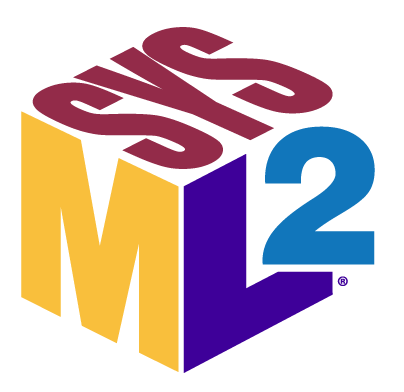SysML v2: The Next Generation Systems Modeling Language!

What is SysML v2?
SysML version 2 (v2) is the next-generation systems modeling language, providing significant enhancements over SysML version 1 in terms of its precision, expressiveness, usability, interoperability, and extensibility.
It is used to specify requirements, behavior, structure, analysis, and verification while maintaining consistency and traceability across all aspects of the system model. SysML v2 is based on the KerML metamodel, which is grounded in formal semantics. It includes textual syntax in addition to graphical syntax, that allows systems modeling to better leverage automation, emerging technologies such as AI, and modern development practices.
It also has a standard application programming interface (API) that supports interoperability with other tools and applications spanning the digital engineering ecosystem.
The SysML v2 specification is available at OMG SysML specification page and the Systems Modeling API and Services specification is available at Systems Modeling API and Services Specification page.
SysML v2 Benefits
SysML v2 can enable more agile, rigorous, and integrated system development. It overcomes many of the limitations in SysML v1 that impede the effective adoption of model-based systems engineering (MBSE) practice at scale. It offers the potential to improve system development quality, cycle time, cost, and agility and thereby increase an organization's competitiveness.
However, SysML v2 is not a panacea and does not stand alone. It must be implemented by conformant tools that unleash the expressiveness of the language while enforcing its rigor. The language must be used in conjunction with an effective MBSE methodology that addresses the broad range of system design and technology considerations. Finally, leveraging the power of SysML v2 requires skilled practitioners who understand systems engineering and the domain of interest and how to apply the modeling language, methodology, and tools effectively.
Who Should Use SysML v2
SysML v2 is intended for use by stakeholders involved in systems development and sustainment that spans the entire system life cycle. This includes systems engineers who are responsible for eliciting customer and stakeholder needs, specifying system requirements, synthesizing system architectures, performing analysis and design trade-offs, and verifying that the system satisfies its requirements. It facilitates cross-functional integration with other disciplines such as electrical, mechanical, software, controls, reliability, safety, security, test engineers, and others that are involved in different aspects of system design and development.
SysML v1 users will naturally evolve to using SysML v2. It is also anticipated that SysML v2 will be embraced by software systems engineers and others wishing to leverage this language as part of their modern development practices.
SysML v1 to SysML v2 Transition
Transitioning an organization's practices, tools, and skill base to leverage SysML v2 as part of its overall MBSE approach requires a strategy and executable plan that aligns with an organization's improvement objectives.
Guidance is available on the MBSE Wiki at mbse:sysml_v2_transition [MBSE Wiki], which was developed as part of a project sponsored by the US Department of Defense (DoD) Digital Engineering, Modeling and Simulation office (DEM&S). The project name is entitled "SysML v1 to SysML v2 Transition Guidance Project".
This project provides initial guidance to assist organizations, projects, and practitioners in transitioning from a model-based systems engineering approach (MBSE) using SysML v1 to an MBSE approach using SysML v2. The guidance includes frequently asked questions, a transition plan outline and recommendations, a SysML v1 to SysML v2 model conversion process with examples, and other relevant information.